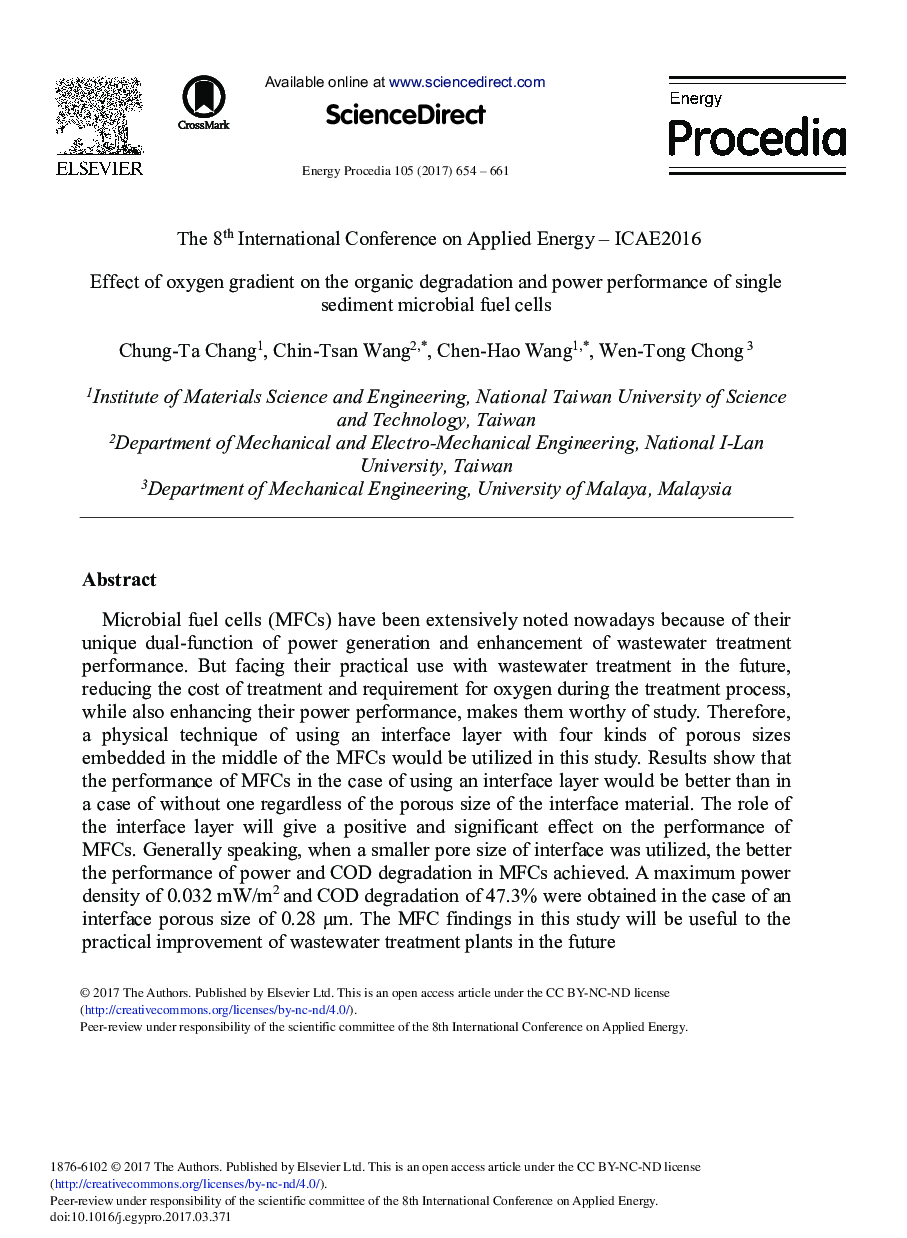| Article ID | Journal | Published Year | Pages | File Type |
|---|---|---|---|---|
| 5446323 | Energy Procedia | 2017 | 8 Pages |
Abstract
Microbial fuel cells (MFCs) have been extensively noted nowadays because of their unique dual-function of power generation and enhancement of wastewater treatment performance. But facing their practical use with wastewater treatment in the future, reducing the cost of treatment and requirement for oxygen during the treatment process, while also enhancing their power performance, makes them worthy of study. Therefore, a physical technique of using an interface layer with four kinds of porous sizes embedded in the middle of the MFCs would be utilized in this study. Results show that the performance of MFCs in the case of using an interface layer would be better than in a case of without one regardless of the porous size of the interface material. The role of the interface layer will give a positive and significant effect on the performance of MFCs. Generally speaking, when a smaller pore size of interface was utilized, the better the performance of power and COD degradation in MFCs achieved. A maximum power density of 0.032 mW/m2 and COD degradation of 47.3% were obtained in the case of an interface porous size of 0.28 μm. The MFC findings in this study will be useful to the practical improvement of wastewater treatment plants in the future
Related Topics
Physical Sciences and Engineering
Energy
Energy (General)
Authors
Chung-Ta Chang, Chin-Tsan Wang, Chen-Hao Wang, Wen-Tong Chong,
